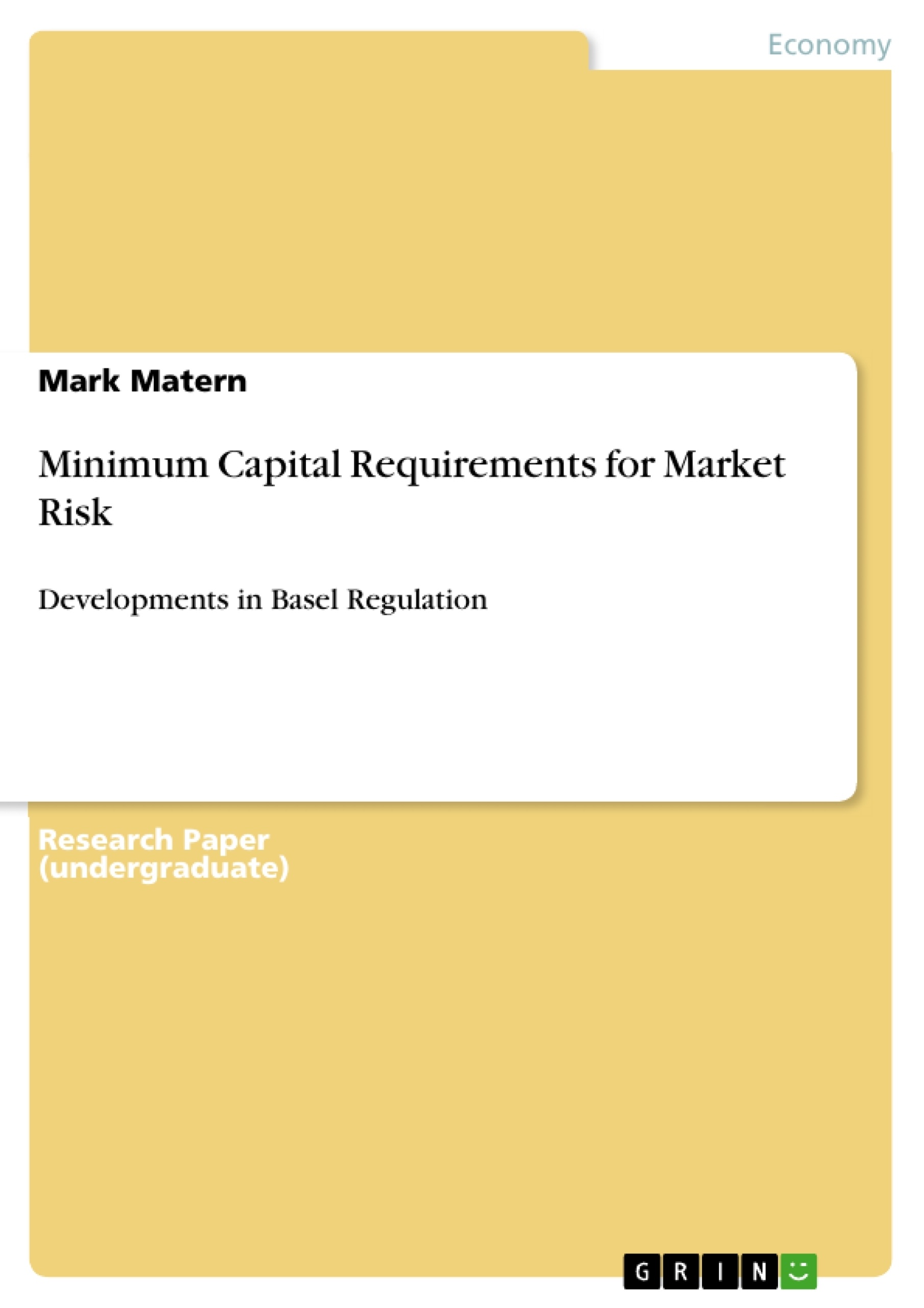The Basel framework has gone through substantial transformation during the last couple of years amidst a political, regulatory and societal environment that has pushed for stricter and more prudential supervisory activity.
This has been a natural development as it became clear that the regulatory framework proved to be inappropriate to cope with the latest developments in the financial services industry. The Basel Committee itself recognized that the pre-crisis regime and overall design of the framework showed material weaknesses in ensuring adequate capital requirements that could absorb the magnitude of losses that the banking industry experienced in 2007/2008.
Table of Contents
1. Introduction
2. Why has market liquidity become an issue in recent regulatory development?
3. Steps to the incorporation of market illiquidity into the new standards on minimum capital requirements for market risk
3.1 Revisions to the Basel II market risk framework
3.2 Consultative Document I: Fundamental review of the trading book
3.3 Consultative Document II: Fundamental review of the trading book - A revised market risk framework
3.4 Consultative Document III: Fundamental review of the trading book - OutstandingIssues
3.5 Standard: Minimum Capital Requirements for Market Risk - Final Standard
4. Academia on illiquidity risk and reference to Basel III
5. Conclusion
6. References
- Quote paper
- Mark Matern (Author), 2017, Minimum Capital Requirements for Market Risk, Munich, GRIN Verlag, https://www.grin.com/document/372142
-

-

-

-
Upload your own papers! Earn money and win an iPhone X. -

-
Upload your own papers! Earn money and win an iPhone X. -

-
Upload your own papers! Earn money and win an iPhone X. -

-
Upload your own papers! Earn money and win an iPhone X. -

-
Upload your own papers! Earn money and win an iPhone X. -

-
Upload your own papers! Earn money and win an iPhone X.

